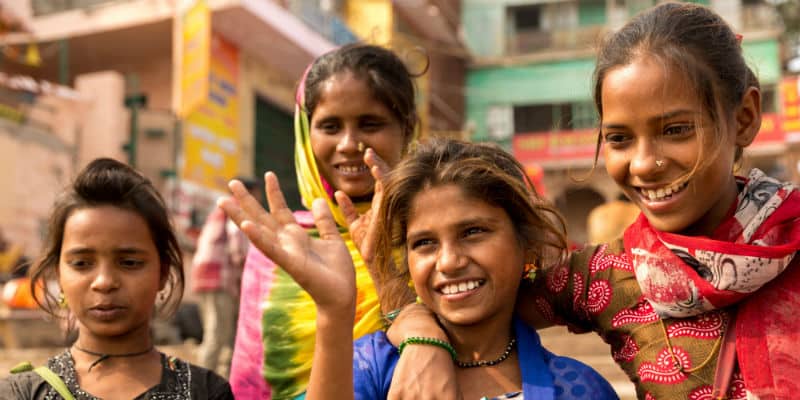As the NBA’s four-time MVP and arguably the greatest basketball player in the world, LeBron James is used to being in the spotlight. But by opening up a school in Akron, Ohio, it appears that his biggest achievement may be yet to come. On July 30th, 2018, the LeBron James Family Foundation partnered with Akron Public Schools to open the I Promise School, targeted at at-risk kids.
At I Promise, students are provided a full stack of supports ranging from free uniforms, bicycles, and helmets, to starting their days by eating breakfast with their teachers to strengthen the student-teacher relationship. Families have access to a food pantry and clothing center, and parents and guardians are provided with services to help them get a GED and find a job. To cap it all off, school is in session from July to May, limiting the about of downtime students have during the summer months to prevent learning loss (aka “the slide”). Oh, and there’s also guaranteed tuition to the University of Akron for every student who graduates and gains admission to the university.
LeBron James and the city of Akron haven’t simply built a school; they have developed a system that takes into account the many obstacles that families must overcome for many at-risk students to succeed. Global development organizations have much to learn from I Promise’s thoughtful approach. Specifically, here are three lessons they should apply to their own work:
Lesson 1: Study the problem, and then start small
Although the LeBron James Family Foundation (LJFF) didn’t officially reach out to the Akron, Ohio Public School system to discuss the idea of I Promise until November 2017, the foundation has been working in the community for nearly a decade. During that time, the foundation focused its work on how best to educate and support children with difficult backgrounds. For instance, the LJFF funded programs to provide bicycles for kids, groceries for families, and scholarships for students to attend the University of Akron. Through its work in the community, the foundation learned more about the ills and perils that at-risk kids face and how it can better support them.
Now armed with a wealth of information, the foundation and school district made the wise decision to start small. In its first year, I Promise will house just third and fourth graders. Over the next several years, however, it hopes to grow to support grades one through eight. This approach will enable the school to apply the lessons it learns in its first few years before scaling its operations in a more sustainable manner. Development organizations should pay close attention—when organizations scale their operations, they tend to scale the good and the bad. And if they haven’t taken the time to improve their operations by ridding themselves of bad practices, this can lead to expensive failures.
Lesson 2: Symptoms are signals of a deeper problem, not causes of that problem
All too often in the world of global development we focus on fixing the symptoms of poverty and struggle to get at the root-cause. Examples abound in almost every corner of the globe, from the Indian government’s recent campaign to build toilets for its people, to the countless water wells and schools being built in Africa. Building toilets, water wells, and schools may address some of the symptoms of poverty, but it won’t get at the root-cause of why people don’t have access to these things in the first place.
Perhaps thanks to the fact that Lebron was once an at-risk child himself, his foundation seems to understand that symptoms of poverty, like when a child skips school or doesn’t do his homework, are just signals of a deeper problem. The foundation seems to have identified a lack of integrated services as a root cause of poverty in Akron, so I Promise takes a holistic approach to education. Broadly speaking, our research suggests that one of the root-causes of global poverty in many economies is the scarcity of simple and affordable products in these economies that can help people solve a particular problem facing them. When these products are introduced, they create a market that not only begins to solve specific problems, but that also employs people, provides them with income, and provides the state with taxes.
Lesson 3: System problems require system solutions
The LJFF understands that many of the challenges facing its students and families are interrelated, or systemic, so it developed a radical system-level approach to education. On the surface, the LJFF has simply partnered with Akron to build a school, but I Promise is so much more than a school. In addition to all the aforementioned services the school provides, it is currently working with Community Legal Aid, a nonprofit law firm that serves the legal needs of low-income residents in central Northeast Ohio, to make legal aid available to families of I Promise students. By taking a system-level approach, the LJFF partnership is likely to find more long-term success.
Likewise, many development organizations are recognizing how disparities in health, sanitation, education, and other barriers to prosperity are interrelated. As these organizations work to lift communities out of poverty, they should focus on developing system-level solutions for their system-level problems. It turns out, no matter how excellent a piecemeal solution to a system-level problem is, the solution rarely fixes the problem.
It’s still early days for I Promise so I can’t predict whether or not it will be managed properly and ultimately become successful. These uncertainties, however, do not stop us from gleaning important lessons from the school.


